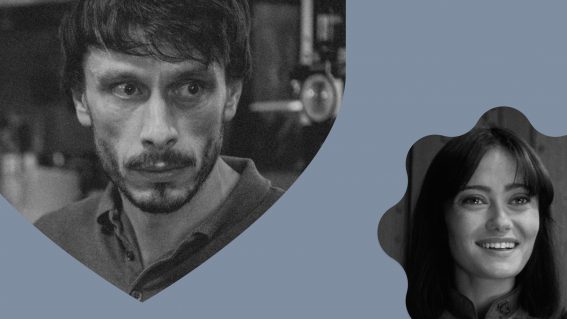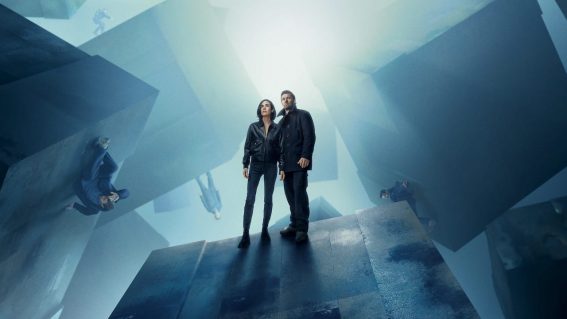Triangle of Sadness director Ruben Östlund on his Oscar contender and the film he’s making next
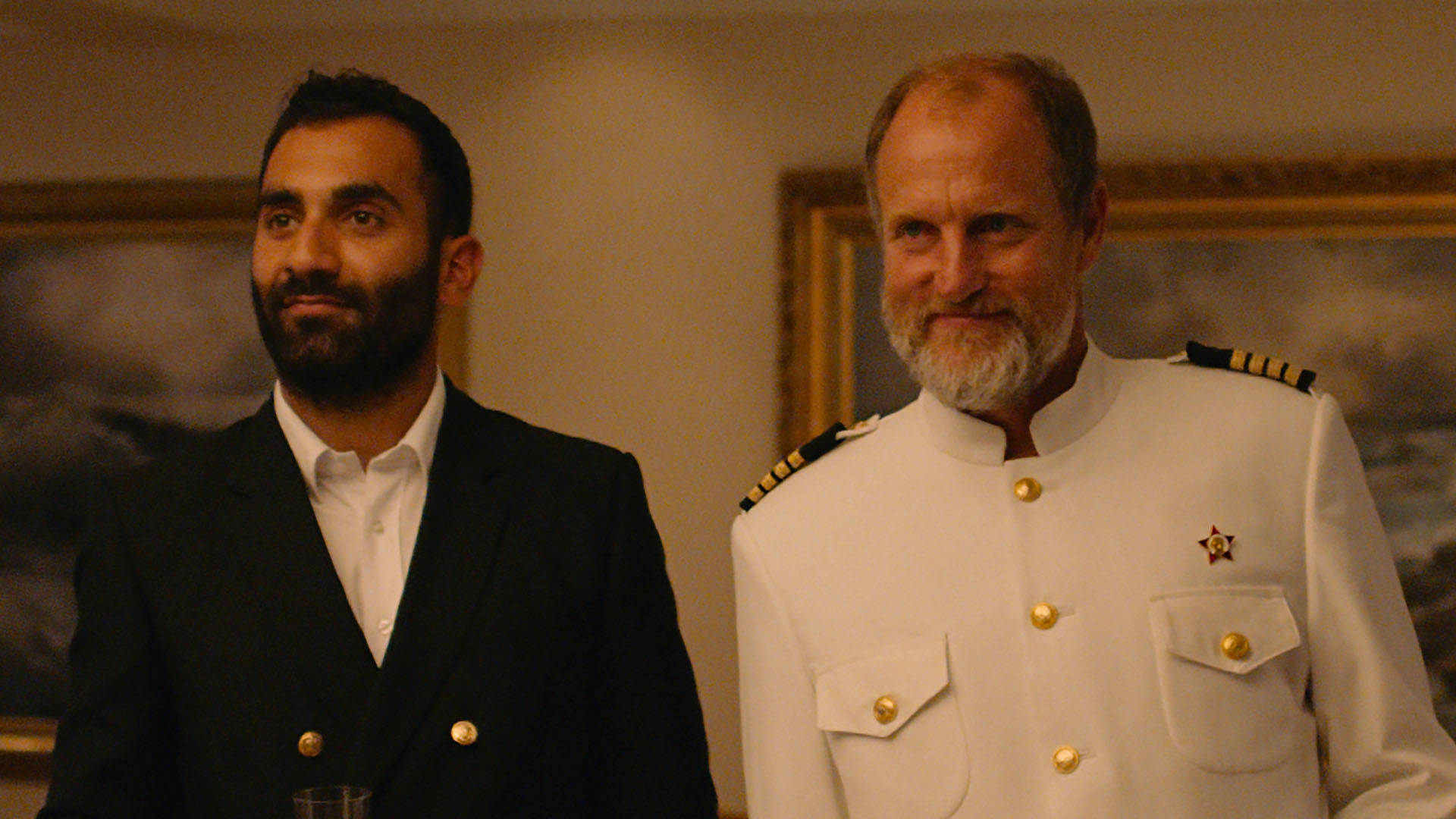
Director Ruben Östlund chats with Tony Stamp about his multiple Oscar nominee Triangle of Sadness – and his next film, set on a long-haul flight.
Swedish director Ruben Östlund owes his success to making people uncomfortable. His first fiction film was released in 2004, but it wasn’t till 2014’s Force Majeure that his dark social satires caught on with a wider audience. His two movies since then, The Square and Triangle of Sadness, both won the Palme d’Or at the Cannes Film Festival, the latter causing uproar during a prolonged gross-out section involving seasickness. It went on to secure three nominations at the forthcoming Academy Awards—Best Picture, Best Director and Best Original Screenplay.
THIS INTERVIEW HAS BEEN EDITED FOR LENGTH & CLARITY
FLICKS: Triangle of Sadness is nominated for three Oscars: Best Original Screenplay, Best Director and Best Picture. Why do you think it has resonated to this degree with American audiences specifically?
RUBEN ÖSTLUND: I think one reason is that I was aiming to create an experience in the cinema, I wanted the film to be something that made it worth it to leave the individual screens and go into the cinema and watch something together. So I pushed it quite hard in order to create what I call a rollercoaster ride for adults. And so it was supposed to be entertaining, but at the same time thought-provoking. So I think that we managed to do a film that was that.
And I also think that the film is about ‘post-identity politics’. We were talking so much about identity politics, discussing things from gender and skin color, and everything like that. And in the aftermath of that, I think that it becomes a discussion that is more about class. And so these are two of the reasons at least.
I thought I sensed a difference in this film, compared to your earlier work. In films like Play and Involuntary, you’re presenting the audience with these very uncomfortable situations, and leaving them to draw their own conclusions.
In the middle section of Triangle of Sadness, specifically, you present us with these quite unlikable people, and then proceed to punish them for about 15 minutes. Is that sequence there partly to complicate our reactions to them, or make us feel sympathy for them? Or did you just want to watch them suffer?
[Laughs] I don’t consider myself especially different from these people. And even if the characters in my movies fail at being good humans, I identify with them. I can identify with the kind of setup they are dealing with. It’s the setup that is creating their behavior.
And actually, I think that I have failed a little bit if you don’t think they are sympathetic because I wanted to create the most sympathetic arms dealers ever portrayed in cinema. I also wanted to make Dimitri the Russian oligarch a very sympathetic guy. He’s frank, he’s just saying how things are. He’s not bullshitting.
I also think it’s a little bit of a convention to read people that are rich as unsympathetic so it’s hard to break that expectation even though we tried to do it in the movie. I actually wrote in the script that at a certain point I want the audience to start to feel they have had enough, don’t punish them anymore now.
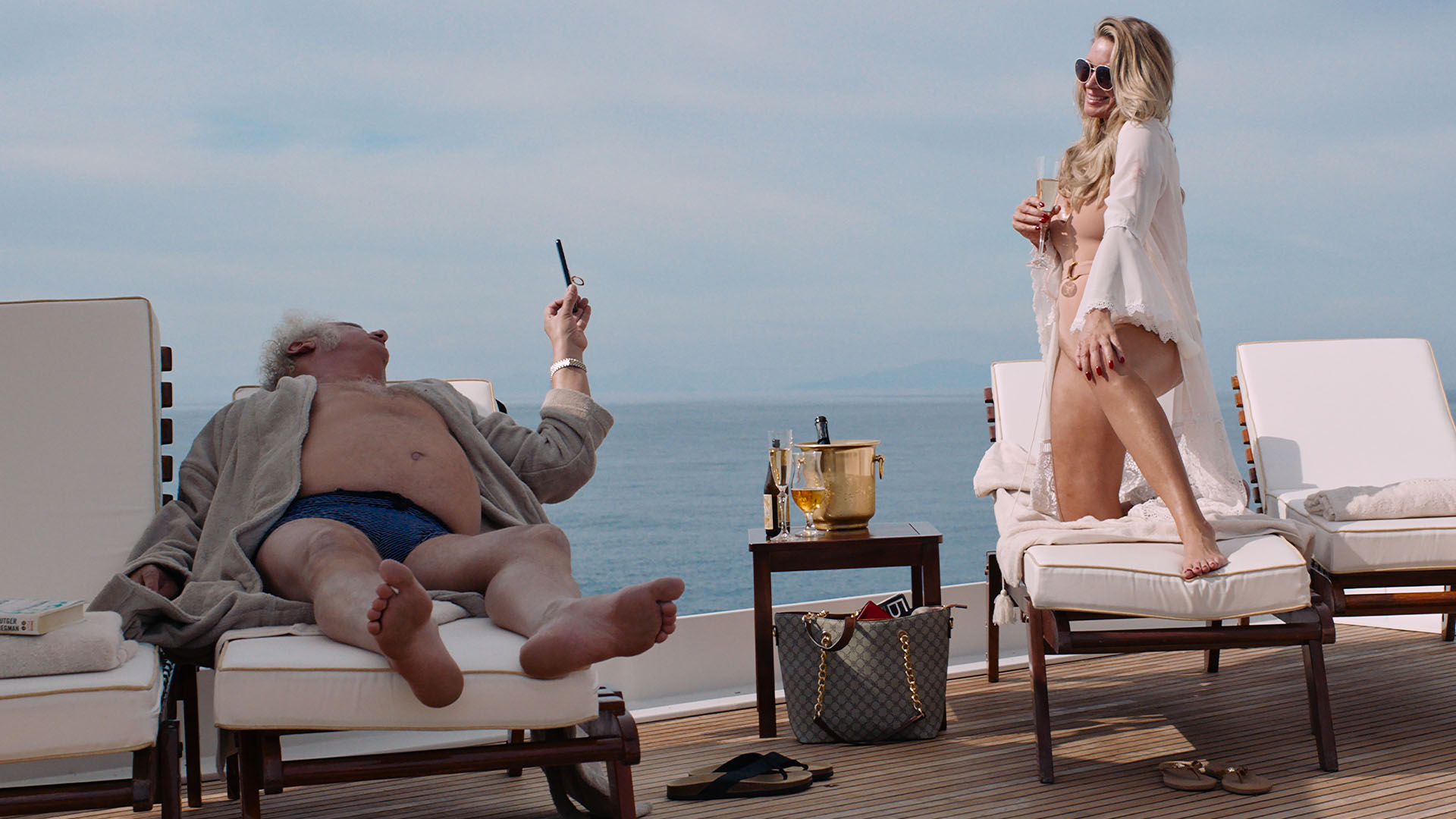
It’s a bravura sequence, and as you’re alluding to, it goes on much longer than expected. Was that a result of having a bigger budget to play with, doing something that huge?
I think so. What we managed to do when we got a little bit of a bigger budget was, we could build the interior of the yacht on a gimbal. So we could rock the whole set. I have a set designer that has never said no to me, it’s very interesting.
And I said, this time, can we build the interior of a dining room of a boat on a gimbal, so we can rock it, so the furniture starts sliding? And she just said yes. The way that she built that was, of course, something that made the film much more expensive.
And also, I could make a film that starts in the fashion world, goes to a luxury yacht, and ends on a deserted island. It’s three different environments and that, of course, makes the film more expensive. And I always have a lot of shooting days. I had 67 shooting days. My previous films I’ve had over 70. So time on set, to be able to spend time with the actors and figure out exactly how we are going to do things is something that is very important to me.
When you do a film that costs 12 million euros, that’s probably the roof of how expensive a film can become in the Swedish and European National Film funding system. It was a combination of American money and Swedish money. And I want to stay in that European Film system when I’m making movies, because it’s a freedom that I have, an artistic freedom, because we don’t have the same kind of pressure on us to make a lot of money. There’s an artistic freedom in that. So I think I will stay in the European system.
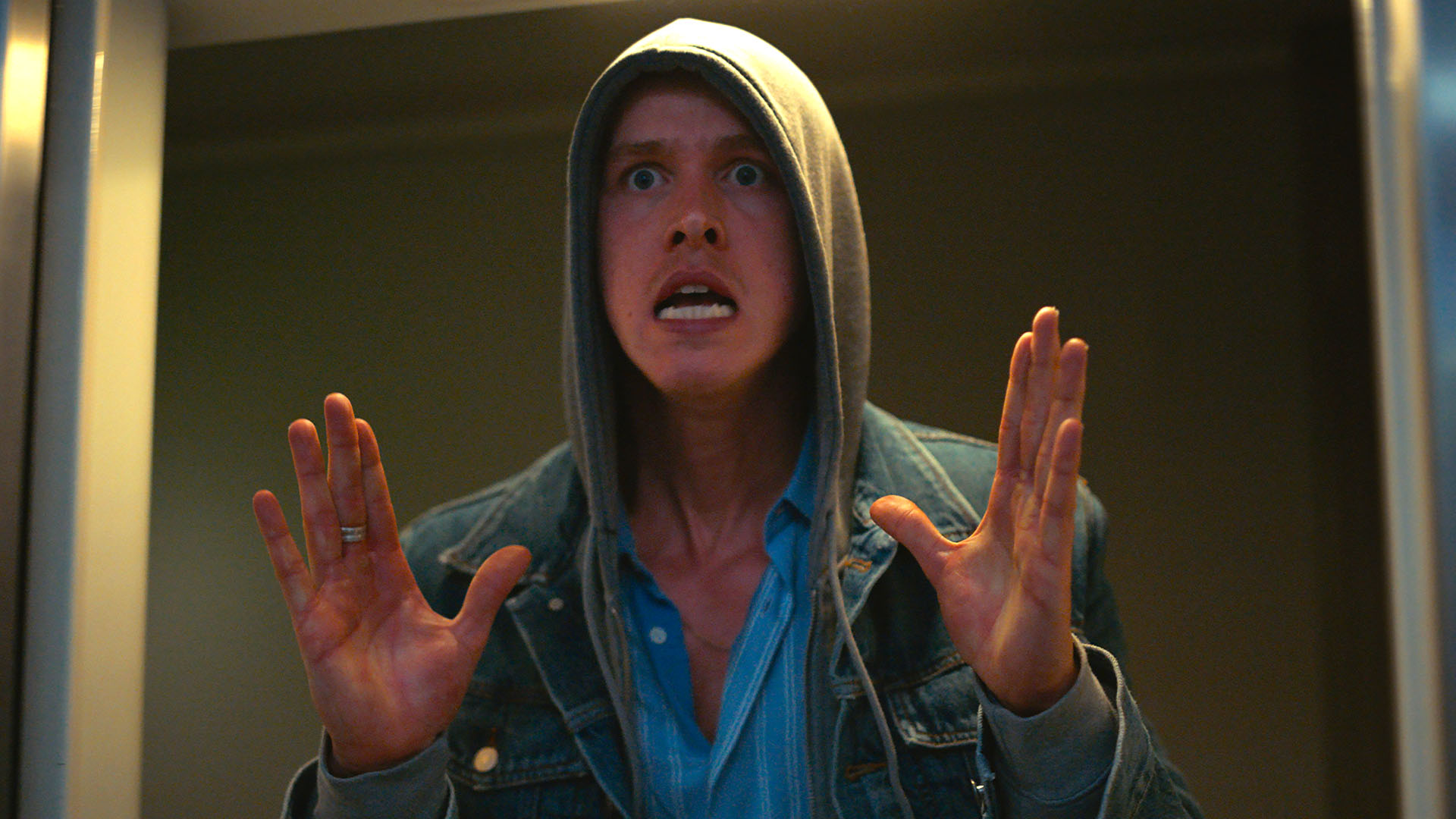
This whole cast is very funny, but personally I found Harris Dickinson hysterical. You have a very specific dry sense of humor that he nails. How did you know that he was on the right wavelength for this film?
I love when you’re working with an actor and can see that there’s a conflict happening on the inside. A person that is actually in a dilemma with emotions. Some actors have a problem lying. Some other actors don’t have a problem lying at all. The ones that don’t have any problem lying, they are more like psychopaths, you know, they are like I can lie about whatever and it doesn’t affect me.
But Harris is a person that is emotionally going to suffer if he is saying something that he feels goes against his morale and what he thinks. And if he’s treating someone in a way that he doesn’t like himself, you will see that in his face when he’s doing it.
I tried him out for the bill scene, the characters fighting over the bill. And he did it beautifully, when he’s freaking out and saying “this is not about money”, and shoving the 50 euro bill down the elevator, so it goes down the elevator shaft. I believed him every second. And I’m actually a little disappointed that he doesn’t get more attention for that part. Because I think he’s doing an extraordinary job.
It’s humorous also. It’s not the nicest side of a person, you know, and when you’re doing that, and showing those things, you have to dare to expose yourself. And we want to be good, we want to be heroes. But when you’re bringing out these sides of yourself and have to find them in yourself, you’re also taking a risk. And so I am very, very proud and happy about this performance.
There’s a clip of you on YouTube, you’re doing some public speaking somewhere. And it was prior to you having made the film. But you talk about its plot in detail, and specifically the ending. The film ends with a dilemma, which you were quite taken with. Is that how you work in general – finding an idea or an endpoint and then working backwards from that?
I think for me, when I look at how I watch things, and why I go to the cinema, I want to see how a certain idea has been visualised. For me, it has never been about what is going to happen, it’s what will it look like when it happens?
So ok, I can tell you, my next film is going to take place on a long-haul flight. It’s called The Entertainment System is Down. Quite soon after takeoff, the passengers get the horrible news that the entertainment system is not working. And they then have to deal with the seventeen-hour-long fight without any digital distractions.
In the beginning of the film, we will have a sign where it says “Flight number __ crashes and everybody dies”. So I can tell you already now, the flight will crash and everybody will die.
Because then you can ask some existential questions about this flight. The flight is an image of our life. For example, the passengers are offered a cheese sandwich and a mineral water as compensation for the entertainment system. And they freak out, they get so angry because of this lousy compensation. And we’re like, please, you’re going to be dead soon. Do something proper with your life.
I want to build a dialogue with the audience that is: Hey, listen to what I’m going to make a film about. Are you not curious to watch it? Don’t you want to see what it looks like when I’m finished? Rather than trying to keep that away from them, being afraid of spoilers.

When you made The Square, you actually created the artwork ‘The Square’, and had it exhibited in various places. I wondered about the research for Triangle of Sadness, whether you researched extreme wealth, or anything like that. I do know that one of the actors is married to a prince in real life. I wondered if that’s why she was cast.
It was not why she was cast. It’s Sunnyi Melles, and she’s just fantastic at vomiting. She could actually provoke vomiting herself. And she is probably the most physical actor I’ve worked with. In the scene where she slides around on the floor she was so tough.
But I did a lot of research on yachts, and did interviews with people working on yachts, and I got to know very interesting things that were going on in this culture that I actually had a hard time to identify with. So for example, I’ve heard that on one of the yachts, there was a guy from New York, the owner, who wanted to go to a city where they had a zoo, because he wanted to have a tiger on the yacht. So they went to a harbor city that had a zoo and they convinced the guy that was taking care of the tiger to bring it to the yacht. He definitely didn’t want to do it, but they said ‘Okay, say how much you want’.
So there were certain things with the yachting culture that became so extreme that I actually had a hard time understanding how that behavior can occur. Another thing that I heard, that I thought was interesting from a behavioristic point of view, was on one yacht, they had the jacuzzi in the master bedroom. And they said, unfortunately, we had to move it away from the master bedroom because it provoked bad behavior from the guests. And what they did was that they very often wanted to fill up the jacuzzi with champagne. Okay, they could handle that, but when one guest asked, ‘Can we fill it up with champagne and put gold fishes in it?’, then they had to move the jacuzzi from the master bedroom.
They are not allowed to say no to the guests, the people working in service. I’m sure there are certain limits they don’t allow the guest to cross but you should not say no, you should say ‘Okay, we will try to solve this’.
So I heard some very interesting things. That’s the luxury you know, when you do feature films. It took me five years to do Triangle of Sadness, because of the pandemic and things that were happening with the project in financing and so on. But then you get five years to get into the topic and get to know a lot about it. It’s something that gives me so much back as a filmmaker, to dig deeper into the different worlds that I’m approaching.
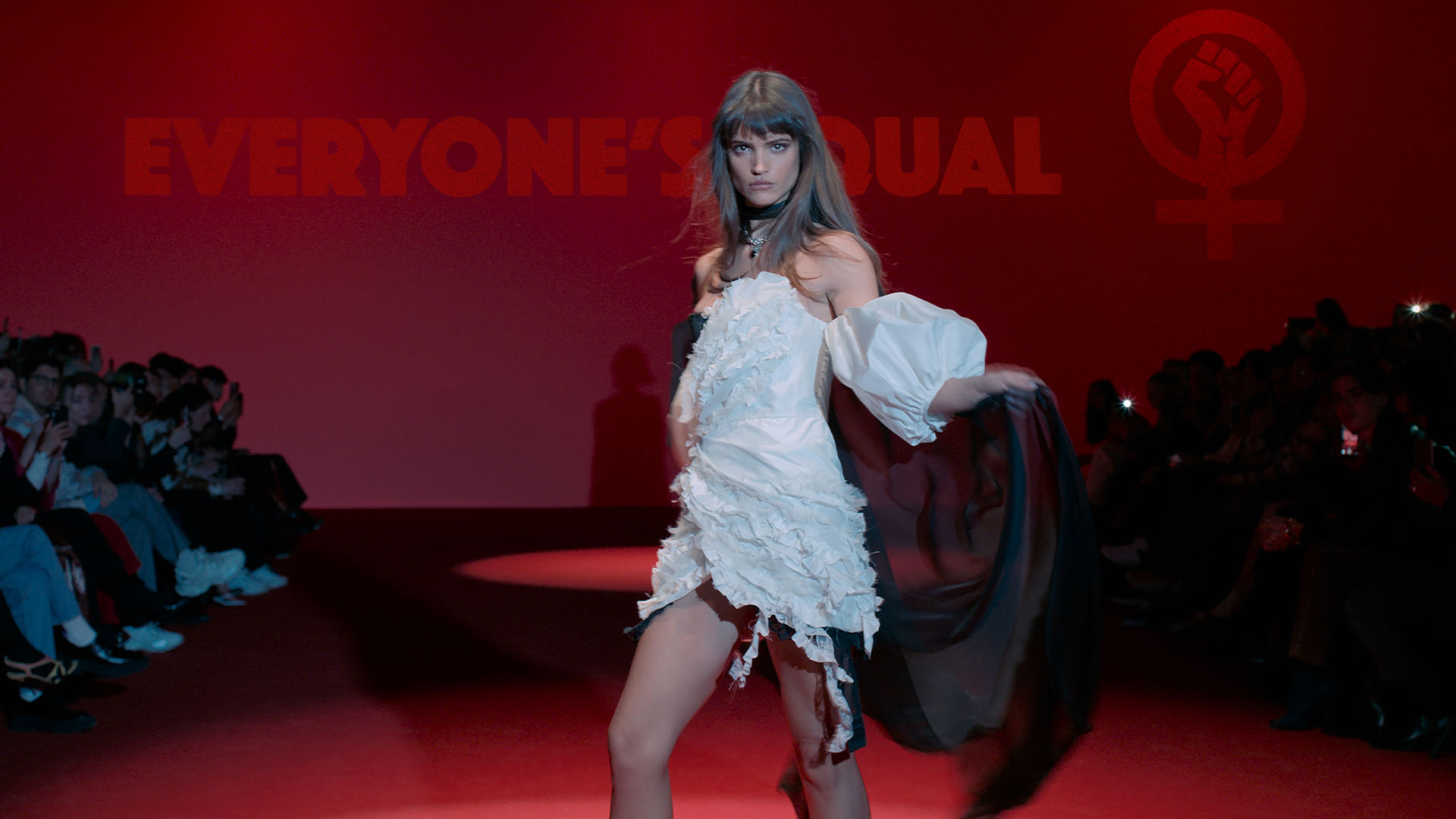
I was lucky enough to see this film in a beautiful theater, with a sold-out crowd, and it was such a visceral response that we all had to the film. I wondered if you are increasingly drawn to that space: films that should be seen in a theater, with a crowd that’s going to respond.
You know, when I did my earlier films, like Play, for example, then I was very influenced by like an arthouse tradition in Europe, and the filmmakers that I looked up to, for example, Michael Haneke, who I think is a very entertaining director. I don’t think that he’s like a typical arthouse director, even if he has a strict way of making his movies. But I had a feeling that arthouse cinema of Europe had almost become its own genre.
So you were starting to do films in a specific way in order to pose that you’re doing important movies about important topics. And I didn’t feel free as a filmmaker, I felt like I had my hands tied behind my back. And I was looking a little bit more towards like European cinema in the seventies and eighties, and filmmakers like Buñuel that did wild and entertaining movies. And I felt like there was a possibility to combine the best part of American film history that is very good at reaching the audience, and the best part of European film, where we can allow ourselves to take risks, because of budget, and because of the money that we get from the state and so on.
And I felt that if I’m going to do movies for the cinema, it has to be an experience for the audience to watch it together with other people. And I actually have become a cineaste. Before when I was younger, I was not interested in the cinema. But now I’m actually starting to realize that cinema culture is completely unique today, because the cinema is one of the few places where we watch images together. We’re processing the context together. And it’s a completely different thing to sit in front of an individual screen than to sit together with someone else, because they might ask me what I think, so I have to reflect, I have to be activated.
And then I have to do films that are working in that room, that make it worth it for people to leave their individual screens and go to that room.
And I also want to make films that I actually want to see myself. I heard a very fun story about someone that was at Venice Film Festival and was flying to Toronto Film Festival, since they are back-to-back. And the whole film industry was on this flight. And he got curious, what films are my colleagues watching? So he was looking over people’s shoulders, and he said, you know, we are not watching our own films. We are watching Adam Sandler. And there’s nothing wrong with Adam Sandler. But I think it’s completely crazy if we don’t watch our own films. So I think it’s possible to create something that combines what we want to watch with content that we think is important.





